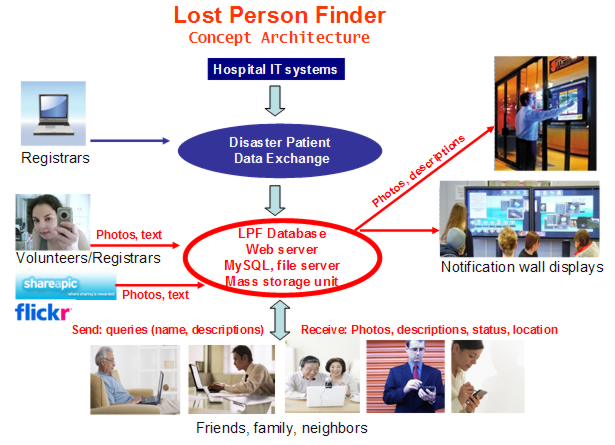CEB Projects |
|
Project Member(s): Michael Gill, Glenn Pearson, Leif Neve, Greg Miernicki, George Thoma
The goal of the LPF project is to create a Web system that enables family, friends and neighbors to locate missing people during a disaster event. Input to the LPF will be from a "Disaster Patient Data Exchange" database containing data from the IT systems of the three participating hospitals. Other input is expected from triage area cell phones and social networks.
Seekers will be able to search the LPF database, and retrieve the information on desktop and handheld computers. In addition, the system will display pictures and other information on missing persons on large monitors placed at key public locations.
This project, conducted by CEB, is one of several undertaken by the NLM to address emergency conditions in the event of a disaster. Along with the National Institutes of Health's Clinical Center, the National Naval Medical Center, and Suburban Hospital, NLM is a participant in the Bethesda Hospital Emergency Preparedness Partnership (BHEPP), under whose auspices these projects are conducted.

In a disaster, this system can help provide reassurance, facilitate family reunification, enhance coordination with disaster-responding NGOs, and alleviate some of the workload on public-health personnel and other responders who interact with the community.








